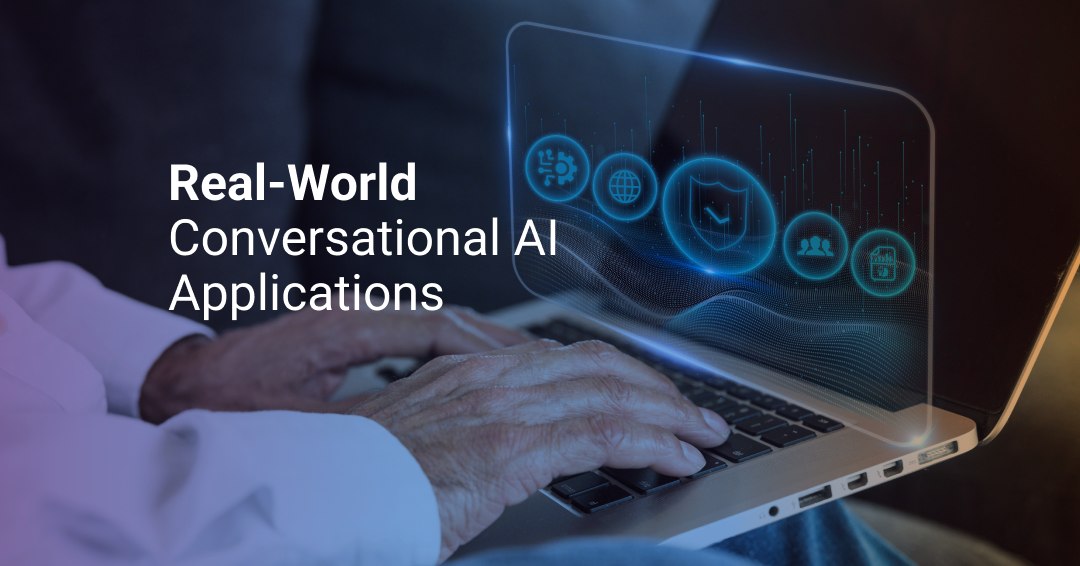The Strategic Role of Analytics Dashboards in Call Centers
When customers call, they want to be heard now, not wait. However, if there's no visibility into what's happening across queues, agents, and...
Most people have interacted with some form of conversational AI. Whether by calling a service line, waiting for a chatbot online, or using an app, these technologies are part of our service culture and business best practices.
Conversational AI is a research field that focuses on mixing multiple technologies and systems to create human-like and interactive conversations. It has been implemented for decades, with primary and rudimentary automation applications to more intelligent and adaptable solutions focusing on problem-solving scenarios. In this entry, we will discuss some examples and use cases of conversational AI.
Conversational AI is more prevalent than many of us may notice. They’re part of our daily interactions with the products and services we buy and do their part by helping us solve problems faster than waiting for a customer service representative. Here are some of the most common conversational AI examples you probably have used.
Given their intent capture capabilities and adaptability, intelligent virtual agents (IVAs) are a more advanced option to AI chatbots. While chatbots and IVRs are more limited, top-of-the-line IVAs, also known as intelligent virtual agents, use artificial intelligence, machine learning, and generative AI to provide customer service. That means that the answers provided are context-rich and can fully match users' intent instead of being limited by a predetermined set of options. In other words, IVAs have replaced traditional IVRs and chatbots given their much more advanced capabilities and cost-effectiveness.
IVAs can be found in multiple industries. For example, Optimizely, a marketing tool to help marketing with A/B testing, created an IVA system to set up, monitor, and analyze multiple tests in parallel to find the most successful ones. In our case, Mosaicx is the IVA ecosystem that helps businesses improve their customer experience and service by using AI, advanced technologies, and human expertise.
Voice-based assistants are pretty standard for most people in the United States, with commonly used devices such as the Echo Dot (Amazon), Siri (Apple), and even Cortana (Microsoft). Unlike the previous subcategories of conversational AI, voice assistants are focused on routine tasks a person may need, such as turning off the lights or setting a timer or reminder.
AI companions are another conversational AI that specializes in providing emotional and psychological support rather than a problem-solving approach. As you can imagine, they are more commonly used in industries related to mental healthcare, relationships, friendship, and more. While they are controversial, the loneliness consequences of the global pandemic have accelerated demand for such products.
Examples of these applications of conversational AI are Replika, an emotional support chatbot that simulates emotional connection, and Gatebox, which is quite similar to the former but with a holographic avatar.
Most people with access to a basic smartphone have likely toyed around with messaging bots. When we refer to messaging bots, we generally mean social bots such as those found on platforms like Facebook Messenger and WhatsApp. While they can be used in a social media context, multiple B2C brands use these channels to automate interactions and provide answers to their clients. 
Conversational AI applications are present in almost all industries. This section will discuss multiple conversational AI use cases and examples of their integration for several sectors.
Banking, in particular, has evolved over the last couple of decades with the help of technologies such as conversational AI. As a result, customer habits have also changed dramatically. They expect their financial institutions to provide safe and easy-to-use solutions to handle their everyday transactions without having to visit a physical location.
Use cases in this industry range from basic tasks like checking your balance to more complicated journeys like money transfers or applying for new products.
Access and healthcare management have also massively evolved with technological advances. From booking doctor’s appointments online to having actual appointments via telemedicine, users expect healthcare providers to be digitally available for their needs.
Some of the most common use cases in this industry are:
Policyholders want providers that adapt to their habits and help them with compassion and an easy path to resolution. Conversational AI plays a vital role in this transformation by collecting information to solve problems faster and avoid poor customer experience occurrences. Instead of waiting to contact a customer service agent, insurance providers implementing advanced technologies like conversational AI can help their policyholders more efficiently.
Some everyday use cases in the insurance industry are:
The way we buy has changed entirely with the internet. Most buyers expect to be able to interact with their favorite brands through digital mediums. Regarding customer service, the expectation is also that retail and e-commerce brands have a robust and effective system that helps them self-manage their problems and find quick solutions.
Common use cases of conversational AI in the retail and ecommerce industries are:
Cable, satellite, phone, and internet service customers may contact their providers for a wide range of reasons that can be hard to handle on a 1-1 basis. With Conversational AI solutions, telecommunication companies can improve their efficiency, collect information required to help customers, reduce downtime and improve overall customer satisfaction.
Some of the most common use cases for conversational AI in telecommunication are:
We don’t travel like we did a couple of decades ago. With technological advancements, everything about traveling has transformed, from how we search for destinations, flights, and hotels to what we experience once we reach our destination. With conversational AI solutions, you can automate interactions to help your customers stay informed at every step of their journey from their mobile devices.
Some of the most common use cases for conversational AI solutions in travel are:
Real-time virtual agents that understand natural language used by customers and provide answers can help your customers have a better experience with your business. By automating processes with conversational AI you can automatically identify intent, provide answers, and solve customer’s problems.
Some of the most common use cases in the utilities industry are:
The evolution of virtual assistants and conversational AI is far from complete. However, Integrating voice-activated technology, enhanced emotional intelligence, multilingual support, AR/VR capabilities, and predictive analytics in virtual agents can help your business create more engaging, interactive, and intuitive customer experiences.
At Mosaicx, we integrate these next-generation virtual agents to help you reduce operational overhead and improve customer experience. Get insights that drive strategy and solutions with our customer service technology.
Request a demo and see for yourself the ecosystem with everything needed to transform customer experience and improve outcomes.
.png?width=1024&height=537&name=Future_Conversational_AI%20(1).png)
.png)
When customers call, they want to be heard now, not wait. However, if there's no visibility into what's happening across queues, agents, and...

Every call is another opportunity for contact centers to gather important data on their customers. That data can reveal preferences, where customers...

Enterprises can't afford to manage their customer conversations with tools that were never designed for scale. One bad interaction is all it takes to...
